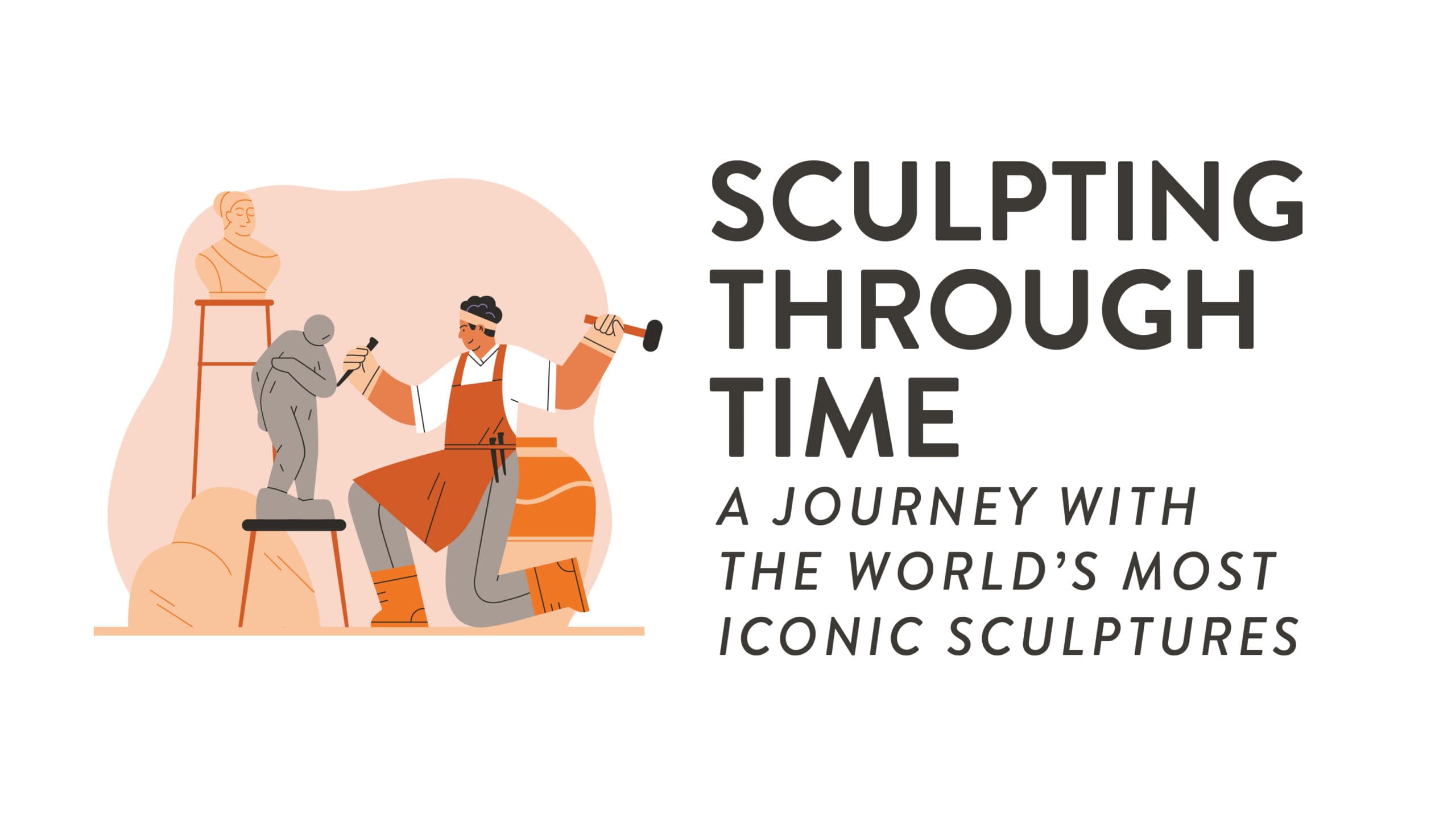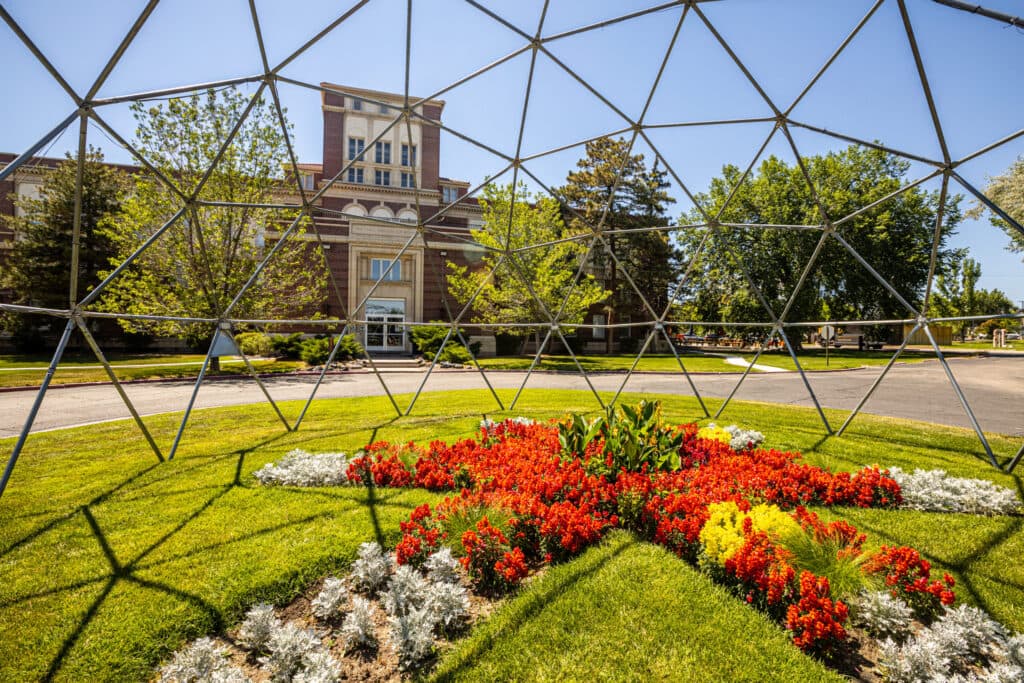Join us on a journey through time as we explore 19 of the world’s most iconic sculptures. The timeless art form of sculpting serves as a window into an era’s aesthetic and cultural ideals. From carved stone of the Italian Renaissance to ancient Greek bronze casting, sculptures are powerful, three-dimensional art statements that are sure to impress those who visit them.
Ancient Marvels
From the deserts of Egypt to the grasslands of China, these ancient marvels are a few of the world’s earliest iconic sculptures ever created.
Egyptian Sphinx: The Great Sphinx of Giza attracts millions of tourists annually, making it one of Egypt’s most visited monuments. This colossal limestone statue with the body of a lion and the head of a pharaoh is an enduring symbol of ancient Egyptian civilization. Standing guard over the Giza Plateau, it’s estimated by archaeologists and scholars to be built around 2500 BCE.
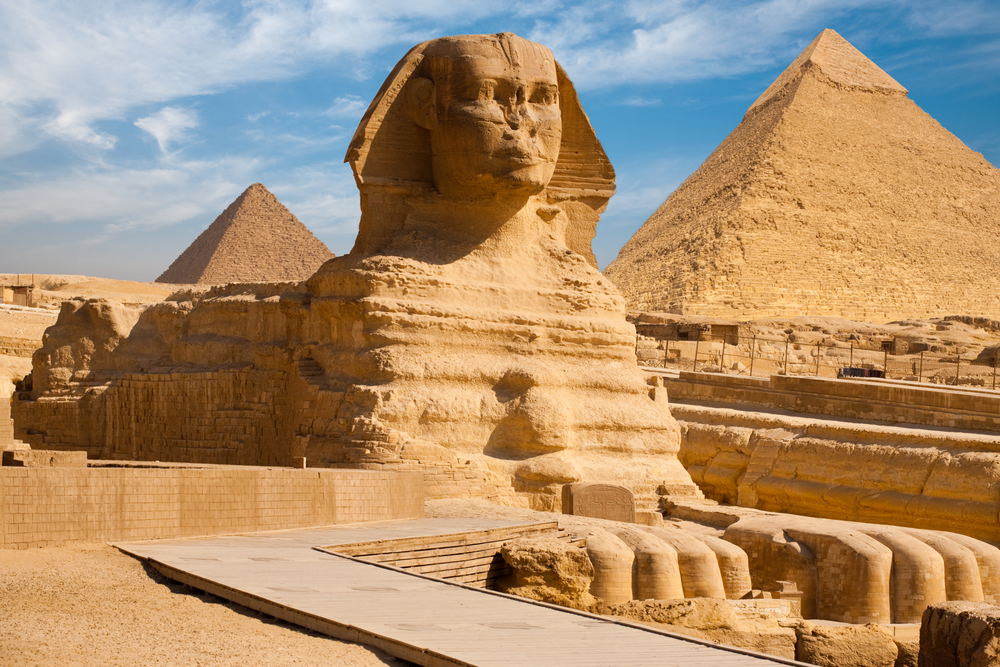
Greek Statue of Zeus at Olympia: Sculpted by the renowned artist Phidias in the 5th century BC, this giant statue of the Greek god of the sky was originally created for the Temple of Zeus in Olympia, Greece. The Greek Statue of Zeus was said to symbolize religious and artistic ideals. Unfortunately, you will only find depictions of this piece in the history books, as it was destroyed shortly after construction due to an undetermined disaster, thought to be an earthquake or fire.
Terracotta Army in China: Constructed around 210 BCE, this ancient collection was thought to be lost to time until 1974, when it was uncovered by local Chinese farmers. The awe-inspiring life-sized sculptures of terracotta soldiers and horses serve as an extraordinary testament to the creative ability of ancient Chinese sculptors. “The Army is believed by some estimates to number more than 8,000 soldiers along with 670 horses and 130 chariots,” Timeout explains. The collection is currently housed in the Museum of the Terracotta Army in Xi’an which sees hundreds of thousands of visitors annually.
Renaissance Masterpieces
Masterpieces such as Michelangelo’s David and Rodin’s The Thinker span many time periods and cultures, often influencing art history on a global scale. Let’s take a deeper dive into these famous sculptures:
Michelangelo’s David: When asked to think of iconic sculptures, Michelangelo’s David might be what most imagine first. Carved from a single block of marble, this iconic depiction of the biblical hero David embodies the perfect blend of independence, strength, and beauty. On display in Florence, Italy, the sculpture attracts over one million scholars and art enthusiasts from around the globe. Michelangelo created David between the years 1501 and 1504.
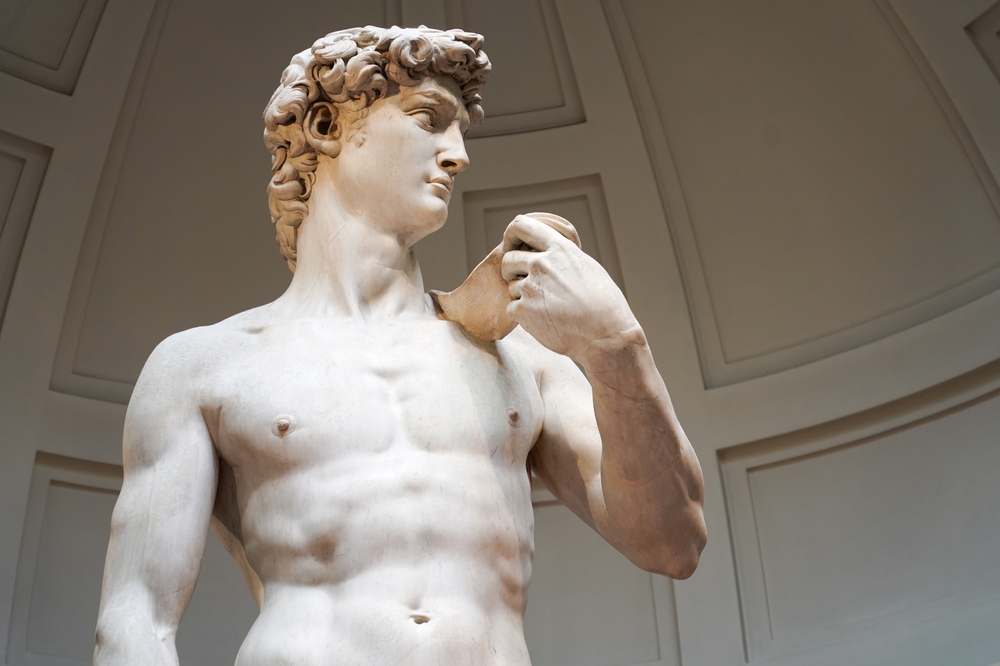
Modern and Contemporary Wonders
Moving into the modern era, sculptors continue to push the boundaries of renaissance tradition, redefining the medium with innovative techniques. From the creepy aura of Maman to the abstract construction of Head of a Woman, let’s take a look at these iconic modern sculptures.
Auguste Rodin’s The Kiss: This romantic sculpture by Auguste Rodin conveys the passion and intimacy shared between two lovers. According to Musée Rodin, “The Kiss originally represented Paolo and Francesca, two characters borrowed from Dante’s Divine Comedy.” Sculpted in 1889, The Kiss’ popularity allowed copies to be created which were distributed to galleries around the globe.
Pablo Picasso’s Head of a Woman (Fernande): Made of clay, the fragmented depiction of a woman’s head showcases Pablo Picasso’s innovative sculptural style. “This is Picasso’s first Cubist sculpture and one of more than sixty Cubist paintings, sculptures, and drawings the artist made of his companion Fernande Olivier in 1909,” The Metropolitan Museum of Art explains. Picasso’s ability to expertly execute a variety of mediums make this piece an impressive spectacle in the world of modern sculpture art.
Louise Bourgeois’ Maman: Louise Bourgeois’ Maman is a striking sculpture that towers over onlookers in every direction. Created in 1999, this innovative, feminist-inspired sculpture depicts maternal strength and protection. One of the more unique art pieces on this list, Maman is truly the pinnacle of contemporary wonders.
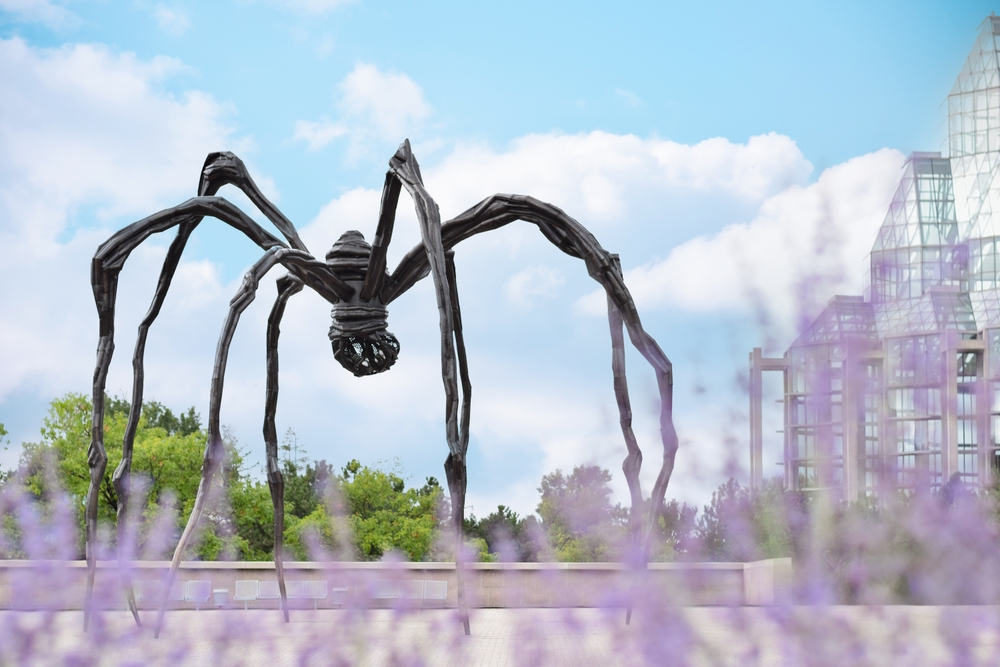
Public Art and Cultural Icons
These sculptural successes have risen above the pack due to their tradition, perception, and appreciation.
Christ the Redeemer in Rio de Janeiro: Perched atop the Corcovado mountain, this colossal statue of Christ with outstretched arms has become an iconic symbol of Rio de Janeiro and a beacon of faith and unity. Christ the Redeemer is considered to be one of the seven wonders of the modern world. The sizable statue sits at 98 feet tall and attracts over two million visitors each year.
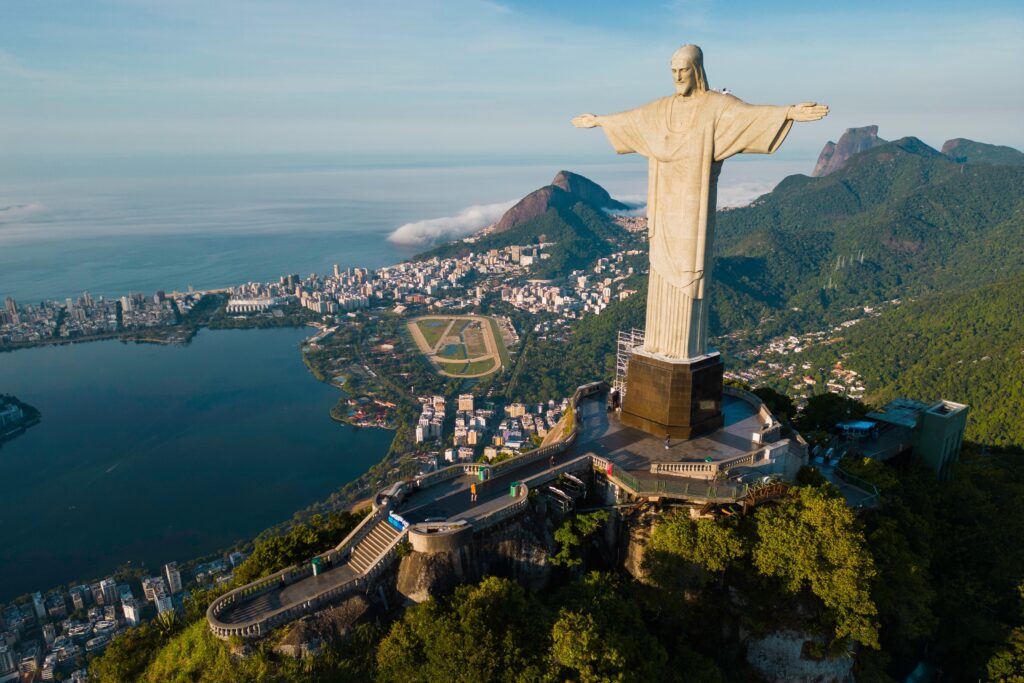
The Charging Bull in New York City: Symbolizing financial optimism and the power of Wall Street, Arturo Di Modica’s bronze sculpture of a bull embodies strength, resilience, and the American entrepreneurial spirit. Weighing in at 7,100 pounds, the hearty bull sits at over 11 feet tall. Di Modica grew up in Florence, Italy, and moved to New York to open his own studio and the rest is history.
The Little Mermaid in Copenhagen: Inspired by Hans Christian Andersen’s fairy tale, this statue of the mermaid perched on a rock invites tourists to the town of Copenhagen, Denmark. Sculpted by Edvard Eriksen in 1913, the work symbolizes innocence and longing. Artist Edvard Eriksen gifted the bronze and granite sculpture to the town of Copenhagen.
Unveiling Cultural Stories
These historic sculptures not only serve as windows into the past but also as guardians of indigenous knowledge, preserving the narratives and customs of civilizations across the globe.
Easter Island Moai: These enigmatic stone statues on Easter Island, known as Moai, embody ancestral spirits and a profound connection to the island’s Polynesian heritage. Shrouded in mystery and intrigue, the island’s statues are estimated to have been created between 1250 and 1500 AD. More than 1000 statues were created to honor those who have passed away.
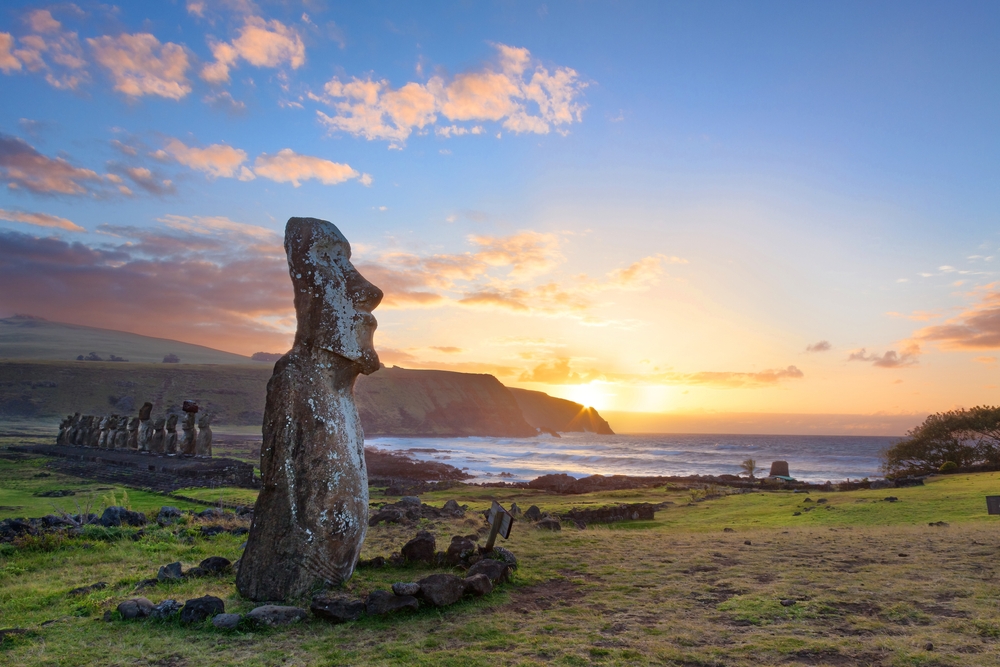
African Benin Bronzes: “The ‘Benin Bronzes’ (made of brass and bronze) are a group of sculptures which include elaborately decorated cast plaques, commemorative heads, animal and human figures, items of royal regalia, and personal ornaments,” the British Museum explains. Crafted by the Benin Kingdom of present-day Nigeria, these intricately designed bronze sculptures celebrate African royal traditions and artistic excellence, reflecting a rich cultural legacy.
Japanese Great Buddha of Kamakura: Towering serenely over Kamakura, Japan, this monumental bronze statue of Amida Buddha exudes a sense of tranquility and spiritual serenity, drawing visitors from all around the world. Boasting the second tallest bronze statue in Japan, the Great Buddha of Kamakura brings in hundreds of thousands of tourists each year.
Beyond Stone and Bronze
Not all statues need to be made of traditional materials to make an impact. From nylon to wire, these famous sculptures are sure to impress even the toughest critic.
Alexander Calder’s Mobiles: Blurring the lines between sculpture and kinetic art, Calder’s Mobiles are dynamic, suspended artworks that dance with the slightest breeze, captivating audiences with their playful movements. The artist has made over 2000 mobiles in his lifetime, becoming a true expert in his craft.
Yayoi Kusama’s Pumpkin: Yayoi Kusama’s oversized pumpkin sculpture invites viewers into a world of unique patterns. According to the Smithsonian, “Legendary painter, sculptor and performance artist Kusama (b. 1929, Tokyo, Japan) uses the pumpkin as a signature form, embracing the gourd as both an allegory and a form of self-portraiture in paintings, drawings, sculptures and some of her most important installations.”
Antony Gormley’s Another Place: Set along the coastline, Gormley’s installation of life-size figures emerging from the sea consists of 100 cast iron sculptures that span 1.8-miles in length. Made in 1997, the work has been estimated to cost a quarter of a million dollars to produce.
Sculpture Parks and Gardens
An art lover’s dream, sculpture parks and gardens offer inspiration, peace, and exploration. Let’s take a look at some of the most unique art havens the world has to offer.
Hakone Open-Air Museum in Japan: Nestled in the landscape of Hakone, this outdoor museum features a diverse collection of modern and contemporary sculptures, inviting visitors to engage with both art and nature. The 70,000 square feet museum takes visitors up to four hours to view its entire collection.
Storm King Art Center in New York: Spanning over 500 acres of rolling hills and outdoor woodlands, Storm King Art Center showcases large-scale sculptures by renowned artists, creating some breathtaking photo opportunities. You will find sculptures made up of a variety of materials and styles, ranging from the Renaissance to modern day.
Gardens by the Bay in Singapore: Blending cutting-edge architecture with lush greenery, Singapore’s Gardens by the Bay features striking contemporary sculptures amidst a futuristic garden setting. “Among the standout features are the famous Supertree structures,” Hotels.com states.
Ready to Create the Next Iconic Sculpture?
These artworks are just the beginning of a boundless realm of creativity and artistic expression. Take the first step today into putting your knowledge into practice by exploring RMCAD’s on-campus Fine Arts program here. Additionally, discover the iconic sculptures on RMCAD’s campus here.
